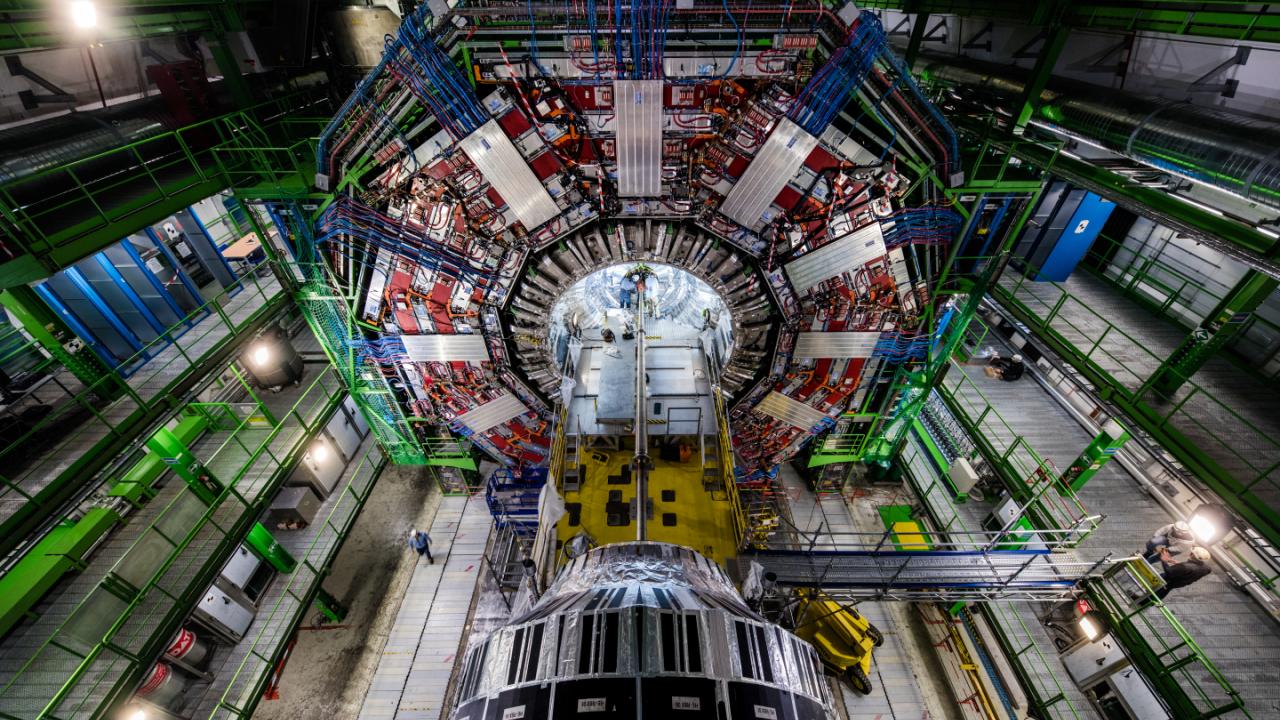Venture from the tiniest subatomic particles to the grand scale of the galaxies and step inside the biggest machine ever built in Secrets of the Universe, a new IMAX movie. Secrets of the Universe will have its global premiere at the Smithsonian National Air and Space Museum in Washington, D.C., on July 10.
Manuel Calderón de la Barca Sánchez, a physics professor at the University of California, Davis, is your guide inside CERN, where scientists from around the world are using the Large Hadron Collider, the biggest and most complex machine ever built, to probe the smallest particles and answer ultimate questions about the universe.
“I am very excited to bring this work to the biggest of screens,” Calderón de la Barca Sánchez said. “The size of the detectors at the Large Hadron Collider is such that the giant-screen format is the best way to do justice to their scale. While few people can have the opportunity to see the detectors firsthand, this will allow many more to get a sense of the size of these behemoths. I’m hopeful that the giddiness that many of us feel when we see them can be shared with many young children, our future scientists.”
The IMAX format uniquely captures the colossal scale of the Large Hadron Collider, which discovered the long-sought Higgs boson in 2012. Calderón de la Barca Sánchez and his students are using the machine to recreate conditions a microsecond after the Big Bang, when a superhot plasma filled the universe. At the limits of our knowledge, they are trying to understand the strongest of the fundamental forces of nature.
In addition to appealing to the traditional museum Imax theater audiences, the film is aimed especially at school-age children. It connects these modern-day discoveries to pioneers of science such as Galileo, Charles Darwin and Marie Curie.
Secrets of the Universe was produced, written and directed by Stephen Low. K2 Studios are executive producers and distributors along with Pietro Serapiglia. The film will have global reach on multiple platforms in addition to IMAX museum theaters. Director Low worked closely with the National Science Foundation, who provided support and access to the Large Hadron Collider and LIGO, and Perimeter Institute of Theoretical Science, Canada, who were the primary science consultants for the film.
“Of the 17 IMAX documentary films I have made, this one was perhaps the most challenging, and the most rewarding, as I think it will help to improve science literacy globally, and inspire young people to pursue a career in science,” said Low, who has won multiple international awards as an IMAX giant-screen filmmaker, including a Kodak Vision Award for Lifetime Achievement.
Media Resources
Manuel Calderon de la Barca Sanchez, Physics and Astronomy, 530-554-2209, mcalderon@ucdavis.edu
Melissa Blouin, News and Media Relations, 530-752-2542, mlblouin@ucdavis.edu
